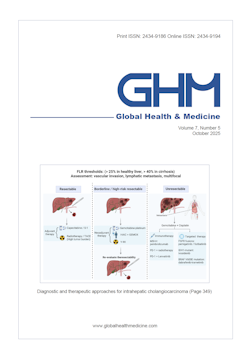Global Health & Medicine 2021;3(5):249-252.
Messages from Japan policy for viral hepatitis
Kanto T
In Japan, the estimated number of chronic HBV infections was 1.1-1.2 million and that of chronic HCV was 0.9-1.3 million in 2015. The mortality of hepatocellular carcinoma (HCC) had been increasing and hit a peak at around 2002, which subsequently started to decrease. Japan has a national action plan for addressing viral hepatitis called, "Basic Act on Hepatitis Measures", established in 2009. "Basic Guidelines for Promotion of Control Measures for Hepatitis" was issued in 2011 and was updated in 2016, comprising 9 principles in order to promote measures to prevent hepatitis B and C. According to these guidelines, national and local government share screening costs for testing HBV and HCV for those residents who are over 40 years old. Thus, out-of-pocket expenses from examinees are free of charge or reduced to a minimum. In addition, for patients with chronic hepatitis B or C being treated: drug prices of nucleotide analogues, interferon treatment or direct antiviral agents, and examination expenses should be covered by a special program for viral hepatitis. From December 2018, the special coverage program of medical expenses, shared by central and local government, has started for patients with HBV- or HCV-induced liver cancer and decompensated cirrhosis. However, in the cascade-of-care of viral hepatitis in Japan, significant gaps still remain in the diagnosis, treatment and transition to patients in need. Several advantages have prevailed in Japanese health care systems for patients with viral liver disease compared to those in other countries in the Western Pacific Region. Therefore, Japan should take a lead in helping the implementation of a practical hepatitis action plan for each country in need.
DOI: 10.35772/ghm.2021.01078







